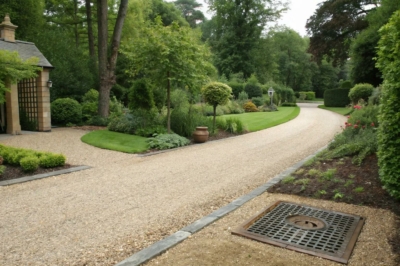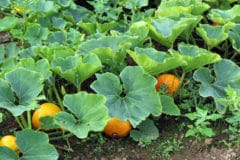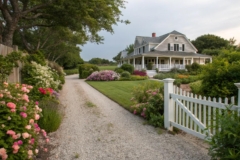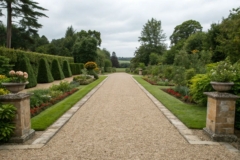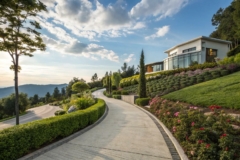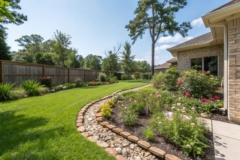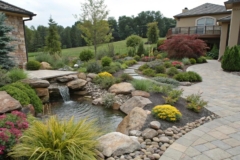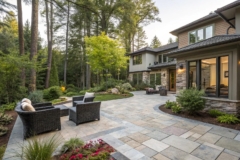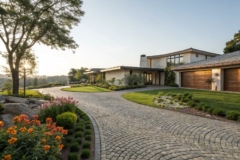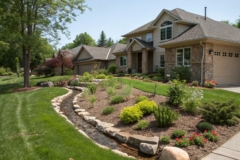1. Slope Your Driveway

A slight slope can naturally direct water away, preventing puddles. During a workshop, I demonstrated this simple yet effective solution, and participants loved the results.
Maybe worth checking out:
- Gravel Base Stabilizer Grid: Enhance stability and prevent rutting for your sloped driveway effectively with this durable grid.
- Driveway Drainage Channel Kit: Install this channel kit to ensure efficient water drainage and minimize water accumulation risk.
- Landscaping Edging Border: Define your driveway edges and aid drainage with this flexible, weather-resistant edging border.
2. Line with Cobblestone Borders
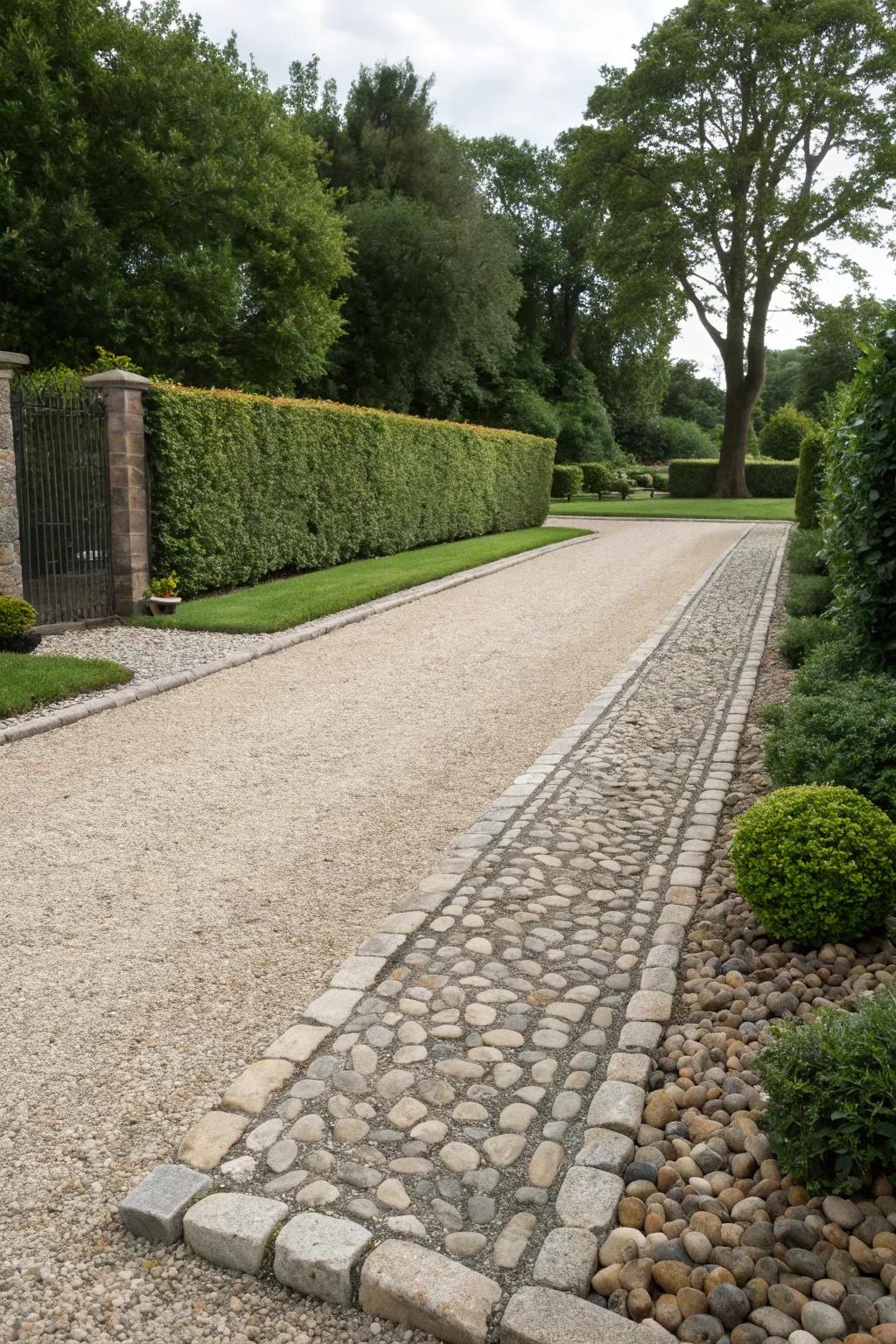
Use cobblestone borders not just for looks, but to guide water flow. I’ve used this approach for clients who value both aesthetics and functionality.
Useful items to consider:
- Cobblestone Paver Kit: Enhance driveway edges with durable cobblestone paver kits for a stylish, water-guiding border.
- Landscape Edging Stones: Install landscape edging stones to create a defined, effective water flow path on your driveway.
- Driveway Drainage Channel System: Ensure efficient water control with a versatile driveway drainage channel system for seamless integration.
3. Install a Dry Well
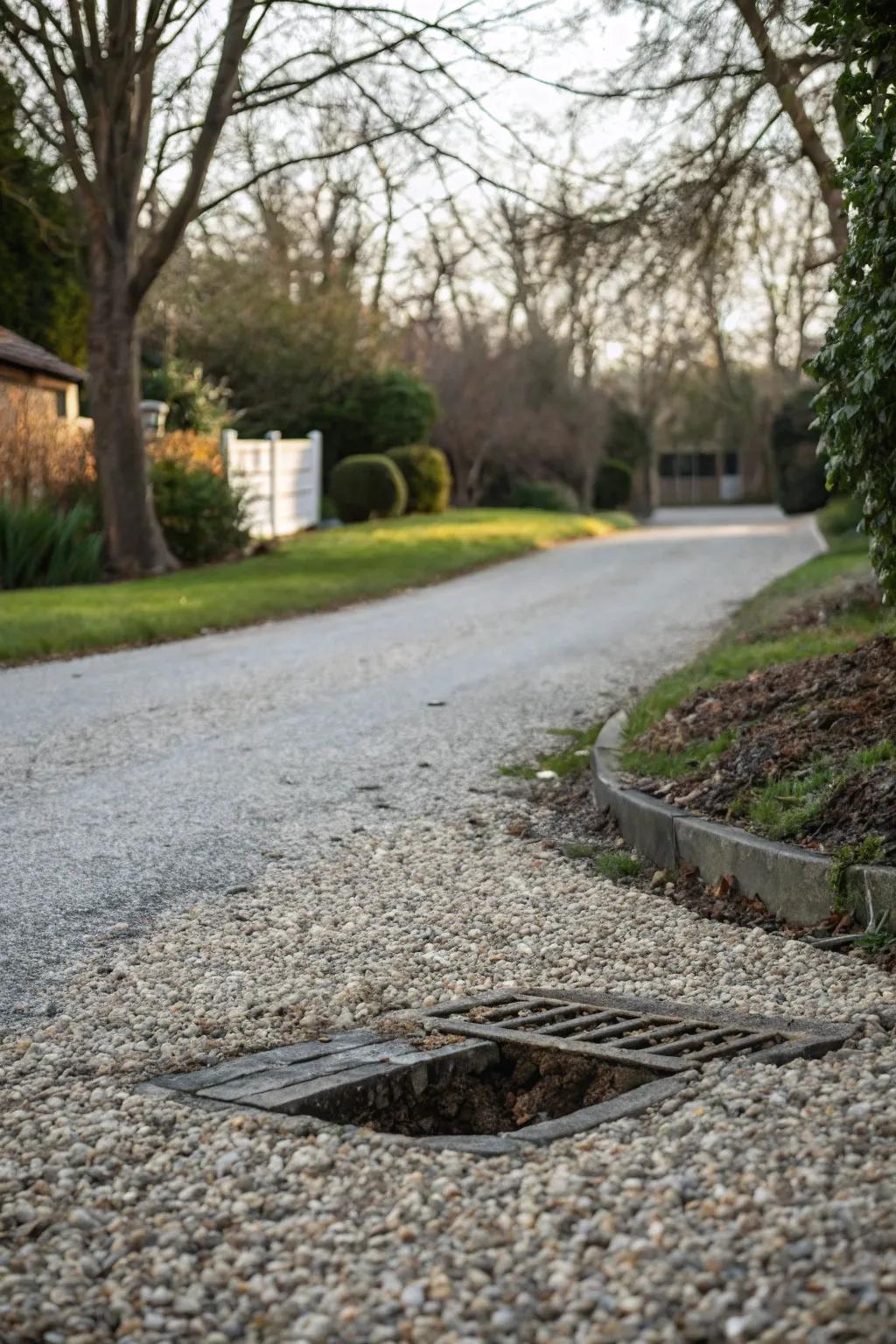
A dry well is a simple underground solution for water collection. I’ve found it effective in dealing with unexpected downpours.
Some handy options:
- Dry Well Kit: Easily collect and manage runoff water with this durable and efficient dry well kit.
- Gravel for Drainage: Ensure excellent drainage performance using this high-quality gravel in your driveway installation.
- Drainage Grate: Protect your dry well area effectively with a sturdy and reliable drainage grate.
4. Install a French Drain
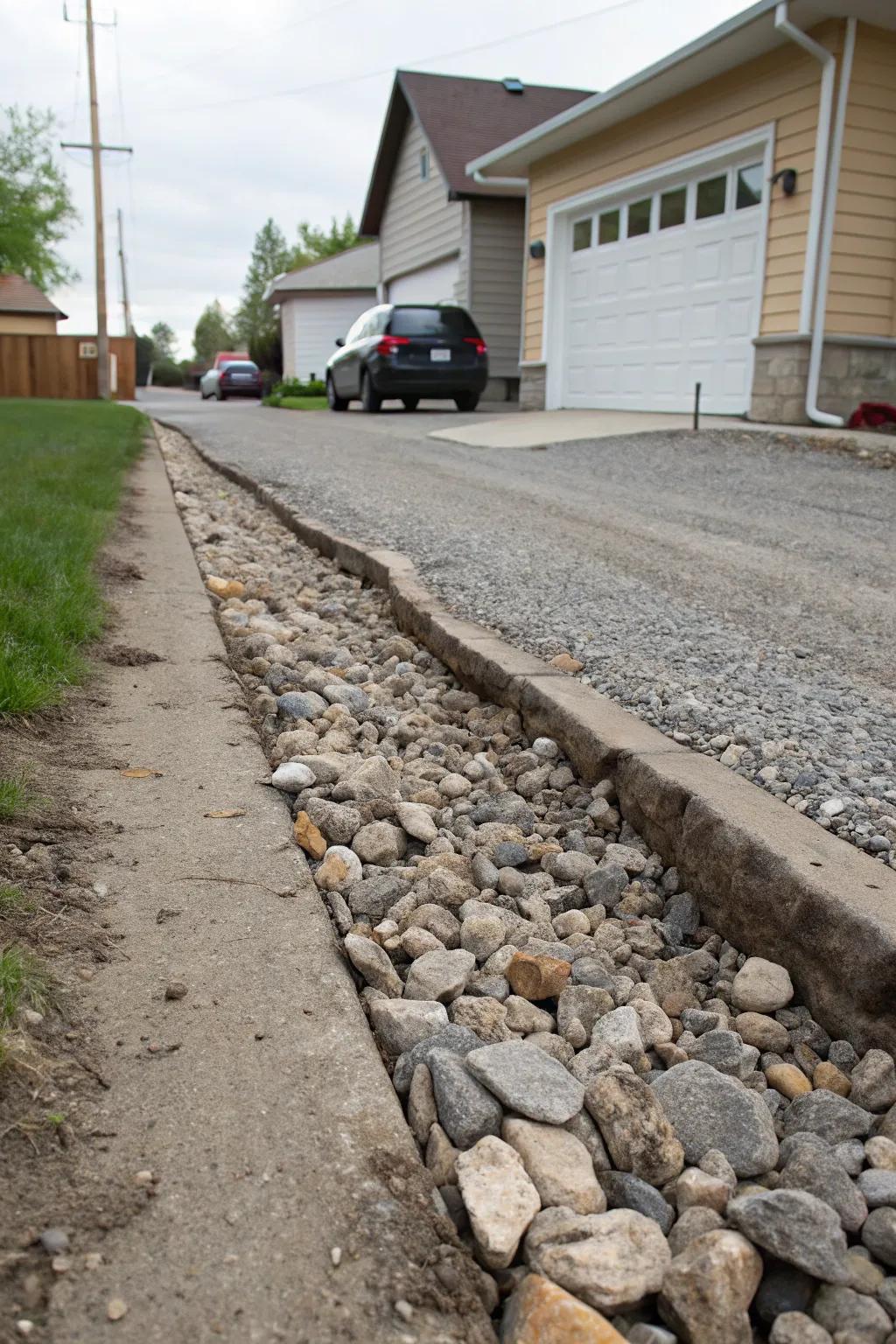
A French drain is like the secret weapon of driveway drainage, channeling water away efficiently. I once helped a friend install one, and it transformed her soggy driveway into a dry, usable space.
A few relevant products:
- French Drain Pipe with Sock: Install this perforated pipe to efficiently channel water away from your gravel driveway.
- Gravel and Drainage Rock: Enhance drainage by using high-quality gravel and rocks designed for French drain systems.
- Geotextile Landscape Fabric: Use this fabric to prevent soil erosion and keep your drainage system clear and functional.
5. Employ a Driveway Channel Drain

A channel drain is perfect for redirecting water, especially in flat areas. I recommend this to anyone dealing with frequent water pooling.
Check these products out:
- Channel Drain Kit: Install a channel drain kit to easily manage driveway water runoff and prevent pooling.
- Grate Cover for Channel Drain: Add a durable grate cover to your channel drain for efficient water flow and safety.
- Channel Drain End Cap: Use an end cap to seamlessly close off your channel drain system and enhance effectiveness.
6. Try a Permeable Grid System
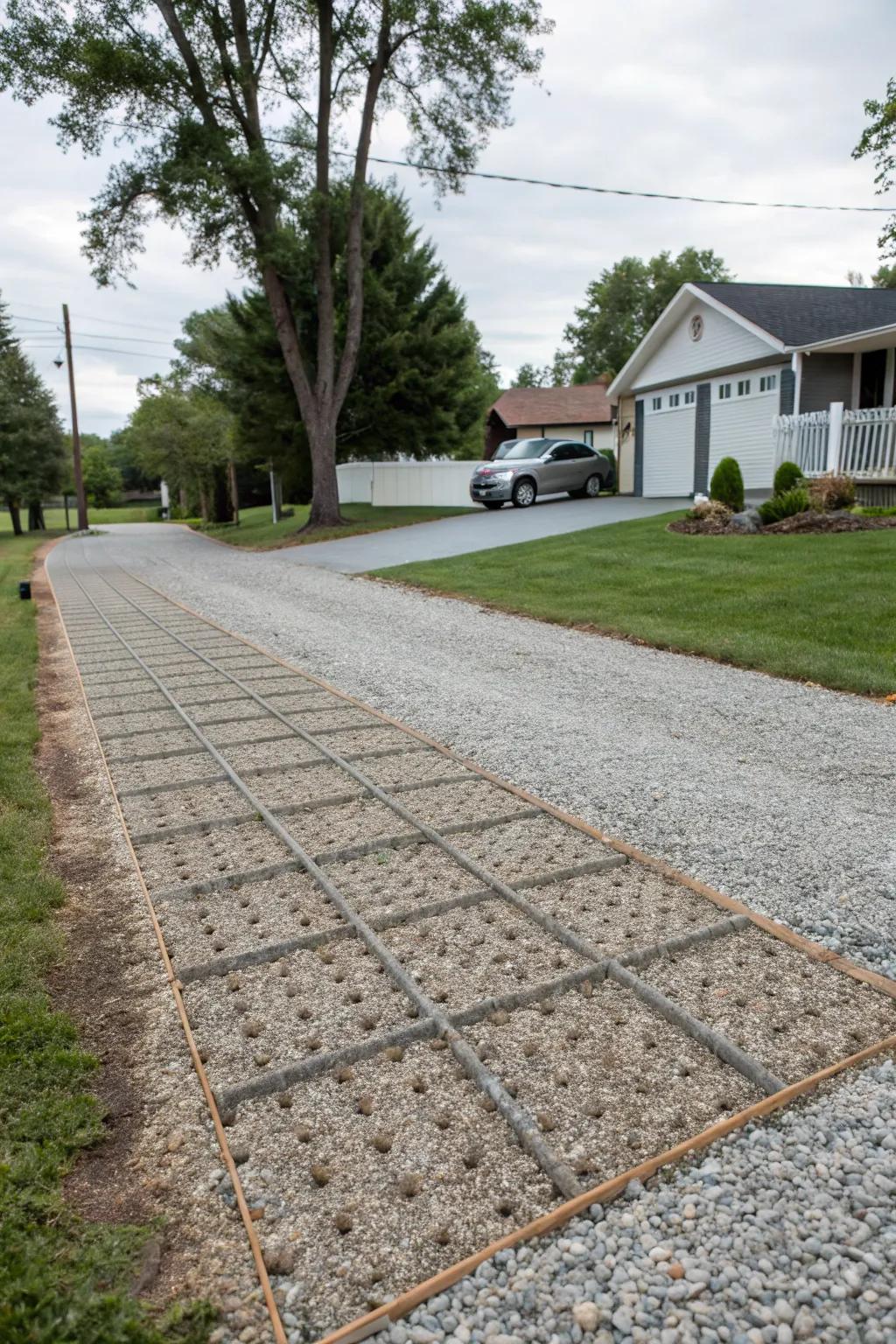
A permeable grid system holds gravel in place while enhancing drainage. It’s a neat trick I’ve used to keep gravel from spreading.
These products might be useful:
- Permeable Paver Grid: Keep gravel neatly in place while improving drainage efficiency with a simple grid installation.
- Gravel Stabilizer Grid: Prevent gravel spread and enhance water flow with a durable stabilizer grid. Easy to set up.
- Driveway Base Grid: Enhance drainage and keep gravel intact using a strong, reliable driveway base grid system.
7. Add a Natural Stone Path
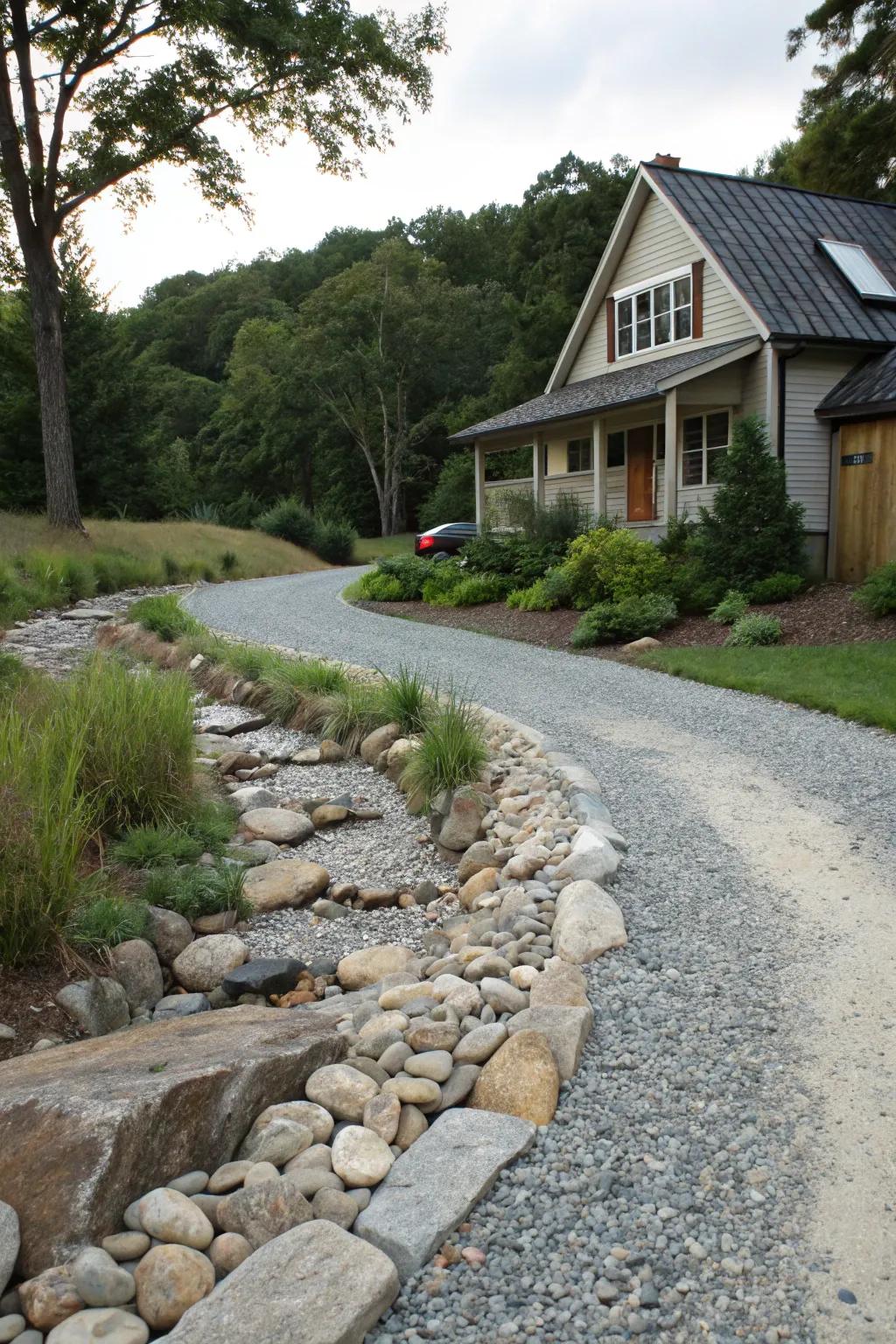
A natural stone path can help divert water and add a rustic touch. I’ve used this method to blend functionality with style effortlessly.
Try these:
- Natural Stone Pavers: Enhance your driveway with these durable natural stone pavers, perfect for water diversion.
- Landscape Fabric: Protect your stone path foundation using landscape fabric to prevent weeds and erosion.
- Gravel Base Layer: Stabilize your stone path with a reliable gravel base layer for added durability and drainage.
8. Integrate a Subsurface Drain
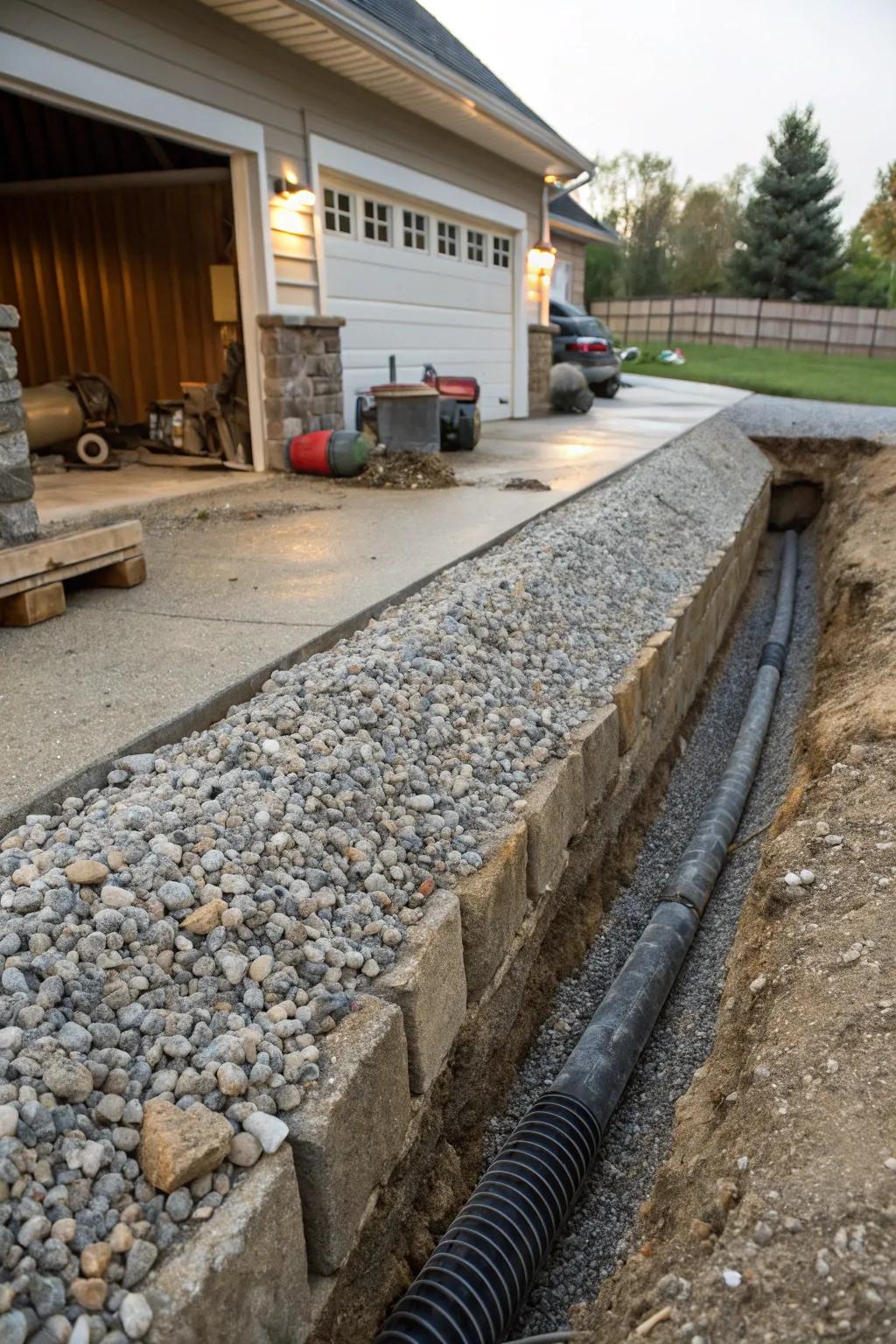
Installing a subsurface drain beneath your driveway can work wonders for water management. This was a lifesaver in my soggier-than-usual backyard corner!
Possibly helpful picks:
- Perforated Drain Pipe: Efficiently manage water beneath your driveway with a durable perforated drain pipe.
- Gravel for Drainage: Enhance drainage by layering with premium-quality gravel under your driveway.
- Drainage Fabric: Prevent soil erosion and blockages with high-quality drainage fabric for your subsurface system.
9. Incorporate a Box Grate

Consider a box grate to handle water in high-traffic areas. It’s an unobtrusive solution that I’ve seen work wonders.
Some ideas to consider:
- Heavy-Duty Channel Drain Kit: Upgrade your driveway drainage with this durable channel drain kit. Perfect for handling heavy water flow.
- Galvanized Steel Grate System: Install this galvanized grate system to protect your driveway while efficiently managing excess water runoff.
- Plastic Trench Drain with Grate: Choose this plastic trench drain for an easy installation and effective water management solution in busy areas.
10. Add a Rock Garden
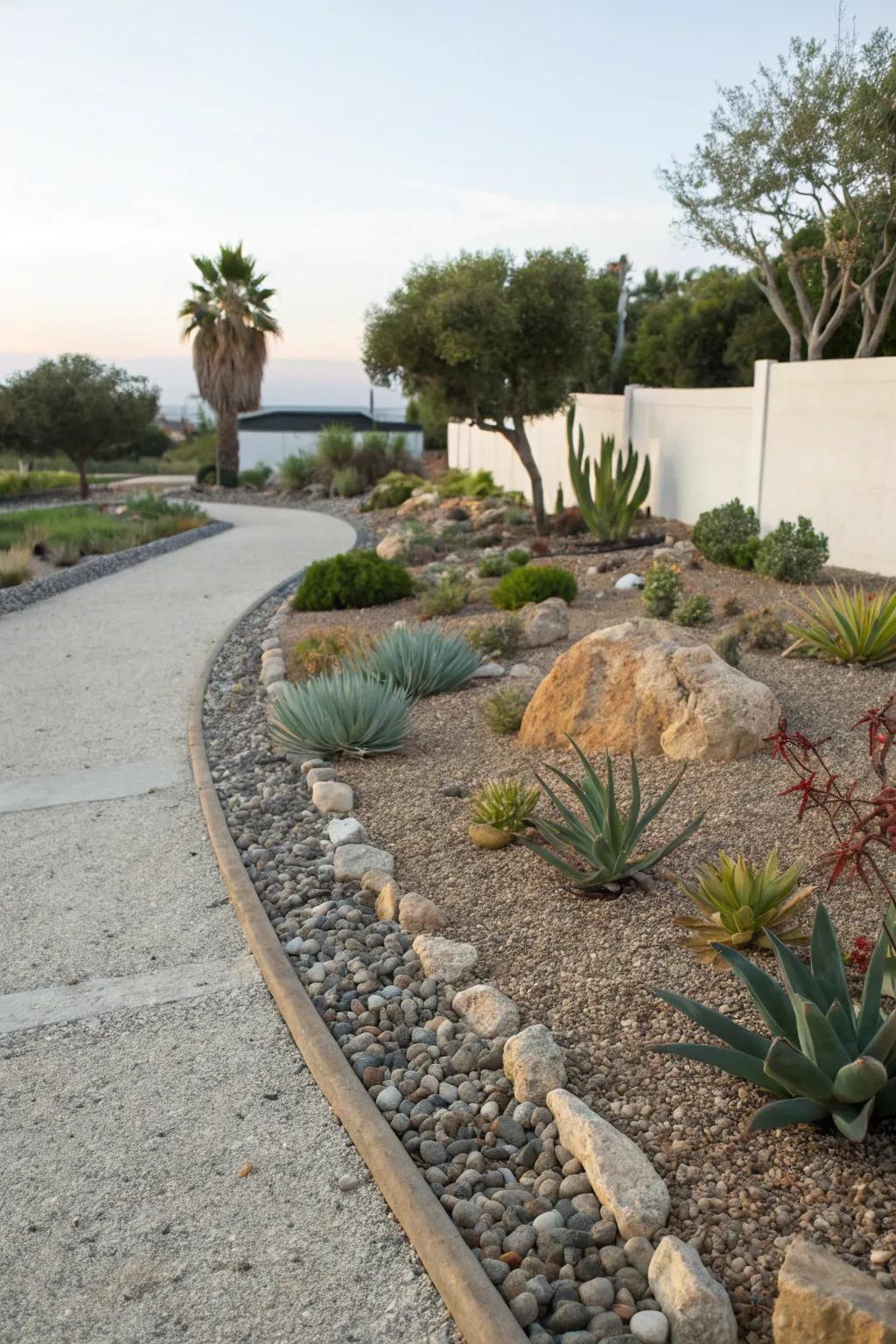
Consider a rock garden along your driveway to absorb excess water while looking stunning. I’ve incorporated one with succulents, and it’s become quite the conversation starter.
Possibly handy products:
- Garden Landscape Rocks: Transform your space with versatile landscape rocks, perfect for drainage and visual appeal.
- Succulent Plant Collection: Enhance your rock garden with durable succulents that thrive in various conditions.
- Garden Edging Kit: Define your rock garden beautifully with easy-to-install garden edging for clean lines.
11. Install Catch Basins
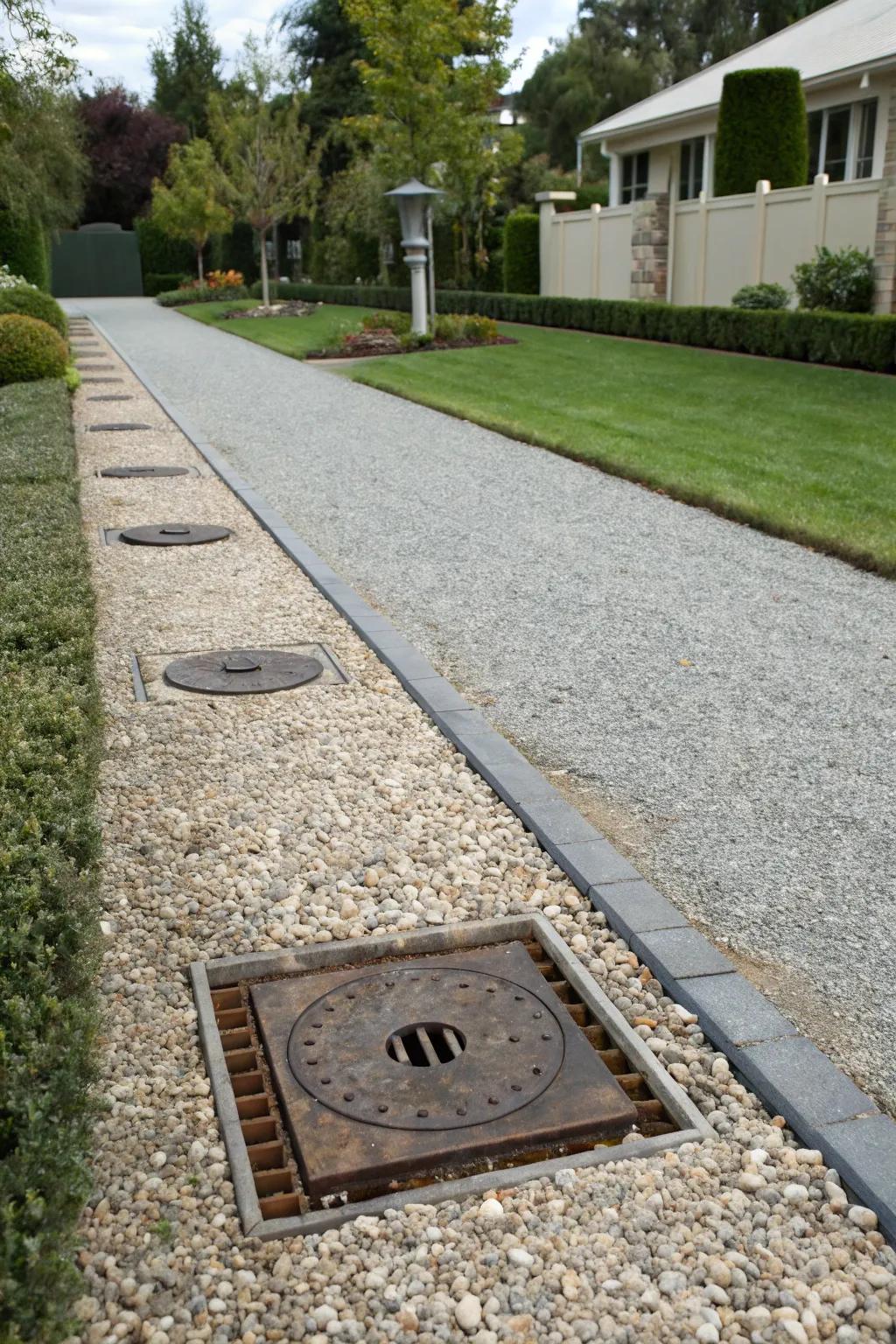
For areas with heavy rainfall, catch basins are perfect for collecting and redirecting water. I installed a few in problem spots around my driveway, and now it handles storms like a champ!
A few helpful options:
- Durable Catch Basin Kit: Improve drainage efficiency with this durable catch basin kit designed for heavy rainfall areas.
- Heavy-Duty Grate Cover: Ensure secure water flow with this heavy-duty grate cover for your catch basin.
- Flexible Drainage Pipes: Expand your drainage system’s reach with these flexible and easy-to-install drainage pipes.
12. Use Natural Slopes
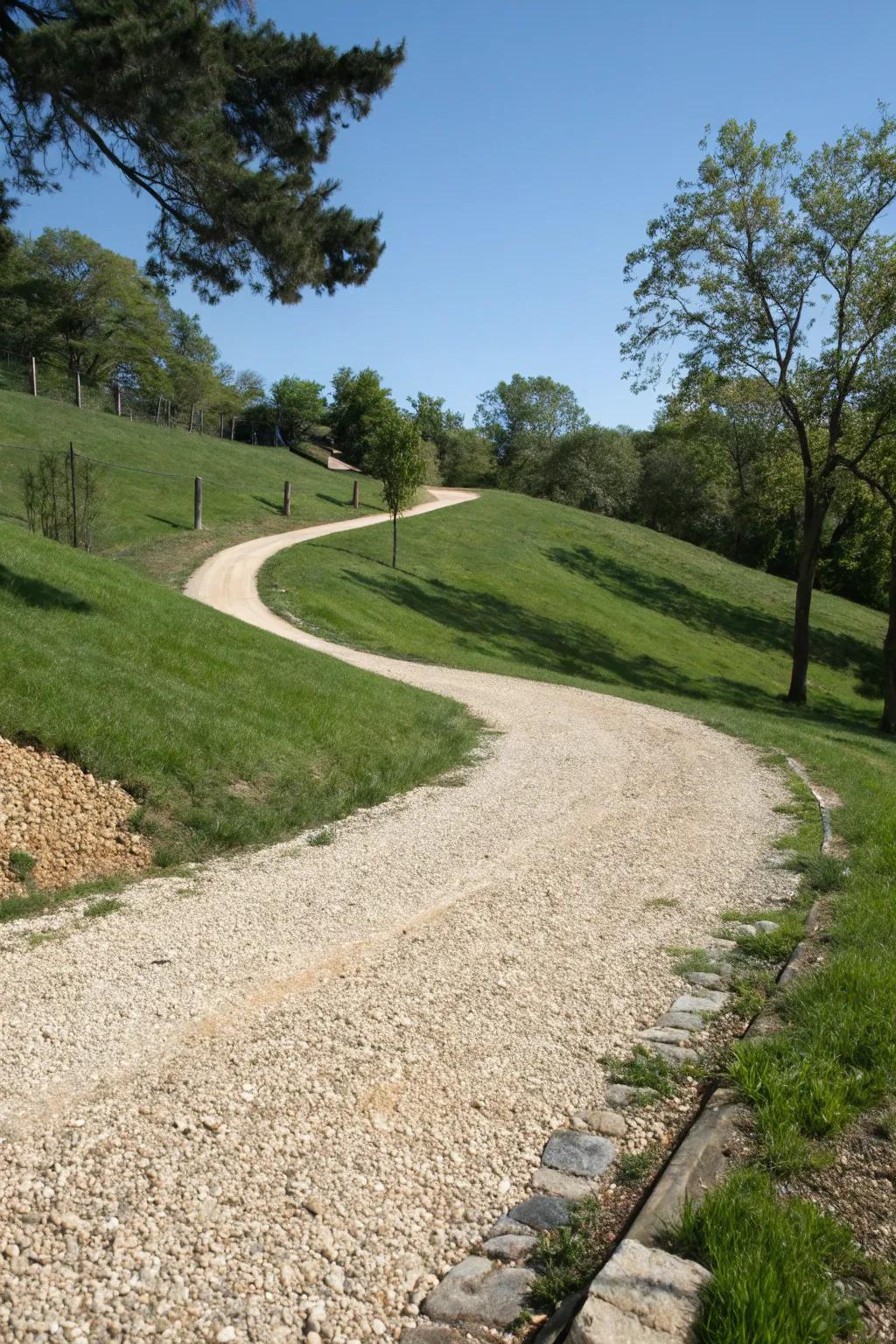
Work with existing natural slopes to guide water away effortlessly. It’s a sustainable approach I often recommend to preserve the landscape.
A few suggestions:
- Perforated Drainage Pipe: Enhance drainage efficiency by installing perforated pipes to guide water seamlessly down slopes.
- Landscape Fabric: Prevent erosion while maintaining drainage with durable, eco-friendly landscape fabric for your driveway.
- Gravel Stabilizer Grid: Secure gravel in place on slopes, enhancing stability and drainage performance effortlessly.
13. Create a Drainage Swale
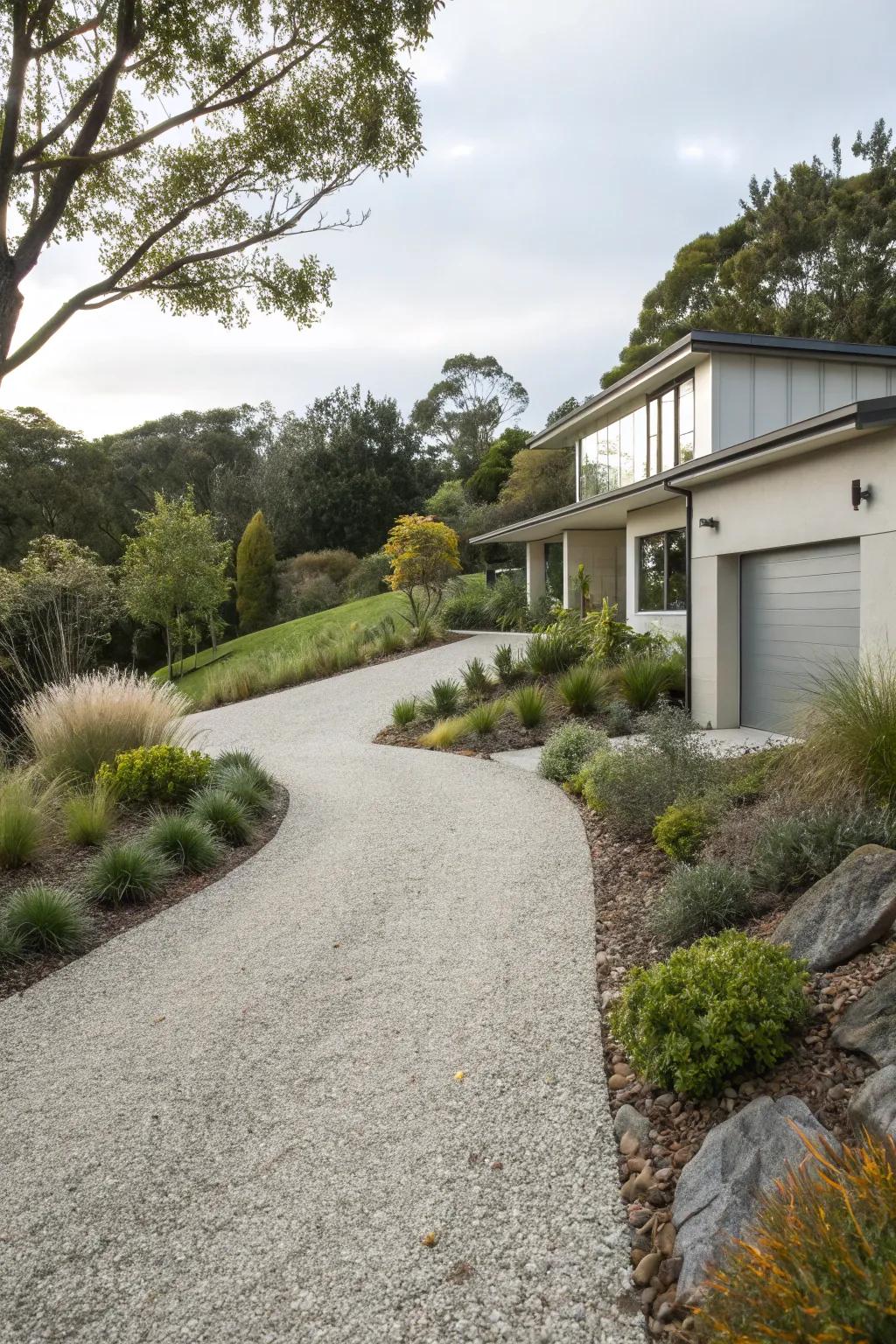
A swale is a shallow ditch that guides water away, and it can double as a charming garden feature. I designed one with native plants, adding both beauty and function to my yard.
Might be a good match:
- Decorative Garden Rocks: Enhance your swale with decorative rocks that guide water and boost aesthetic appeal.
- Native Plant Seed Mix: Plant native seeds to attract wildlife, enhance beauty, and improve swale functionality.
- Landscape Fabric: Use landscape fabric to prevent weed growth and maintain your swale design effectively.
14. Build a Small Retention Pond
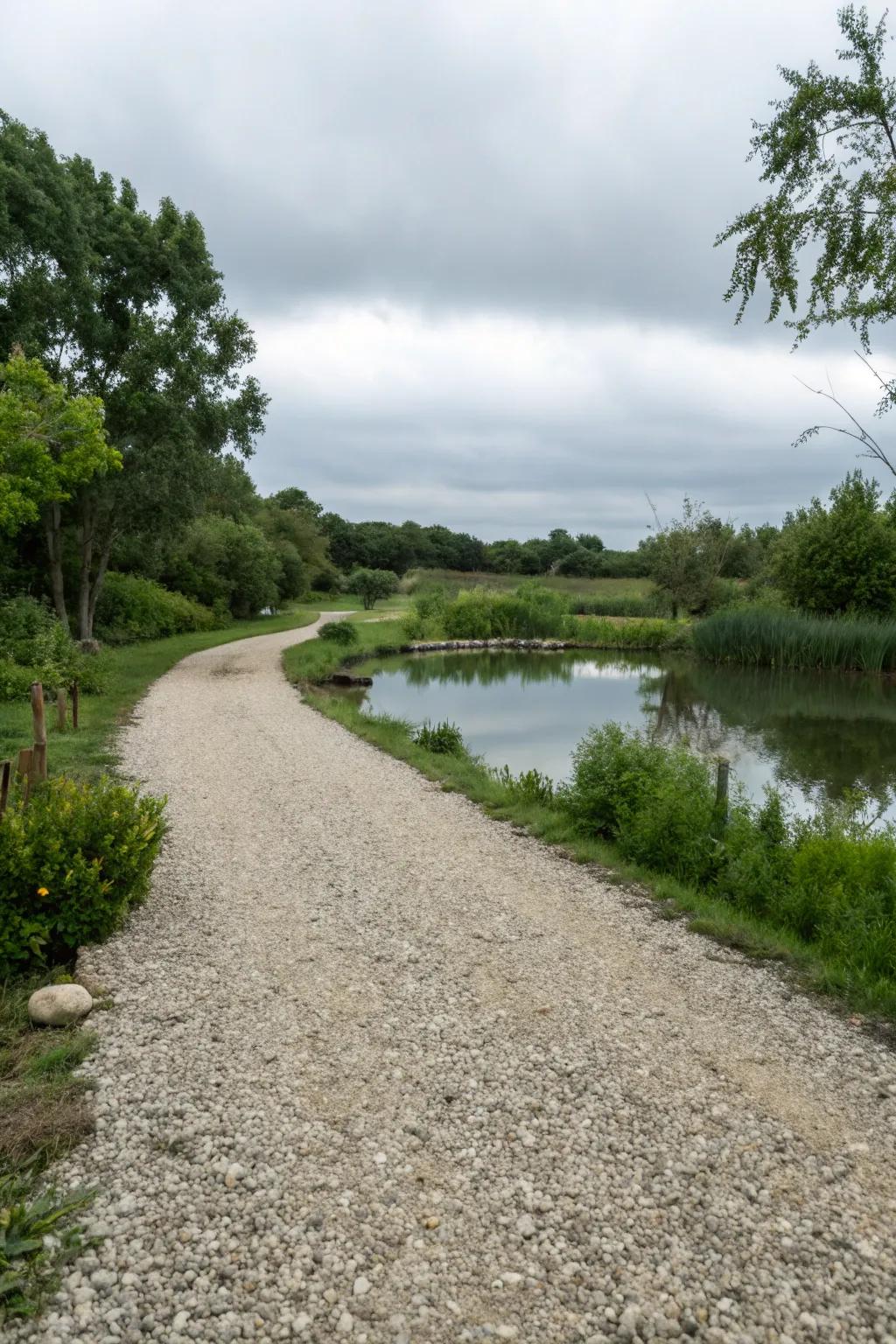
If space allows, a small retention pond can be a picturesque solution for excess water. It’s like having a mini oasis right next to your driveway!
These products might help:
- Pond Liner: Ensure your pond holds water efficiently with a durable, reliable pond liner.
- Solar Pond Pump: Enhance water circulation with an eco-friendly solar pond pump for a serene environment.
- Aquatic Plants Kit: Create an oasis by adding attractive aquatic plants to your pond with this easy kit.
15. Incorporate a Gravel Trench
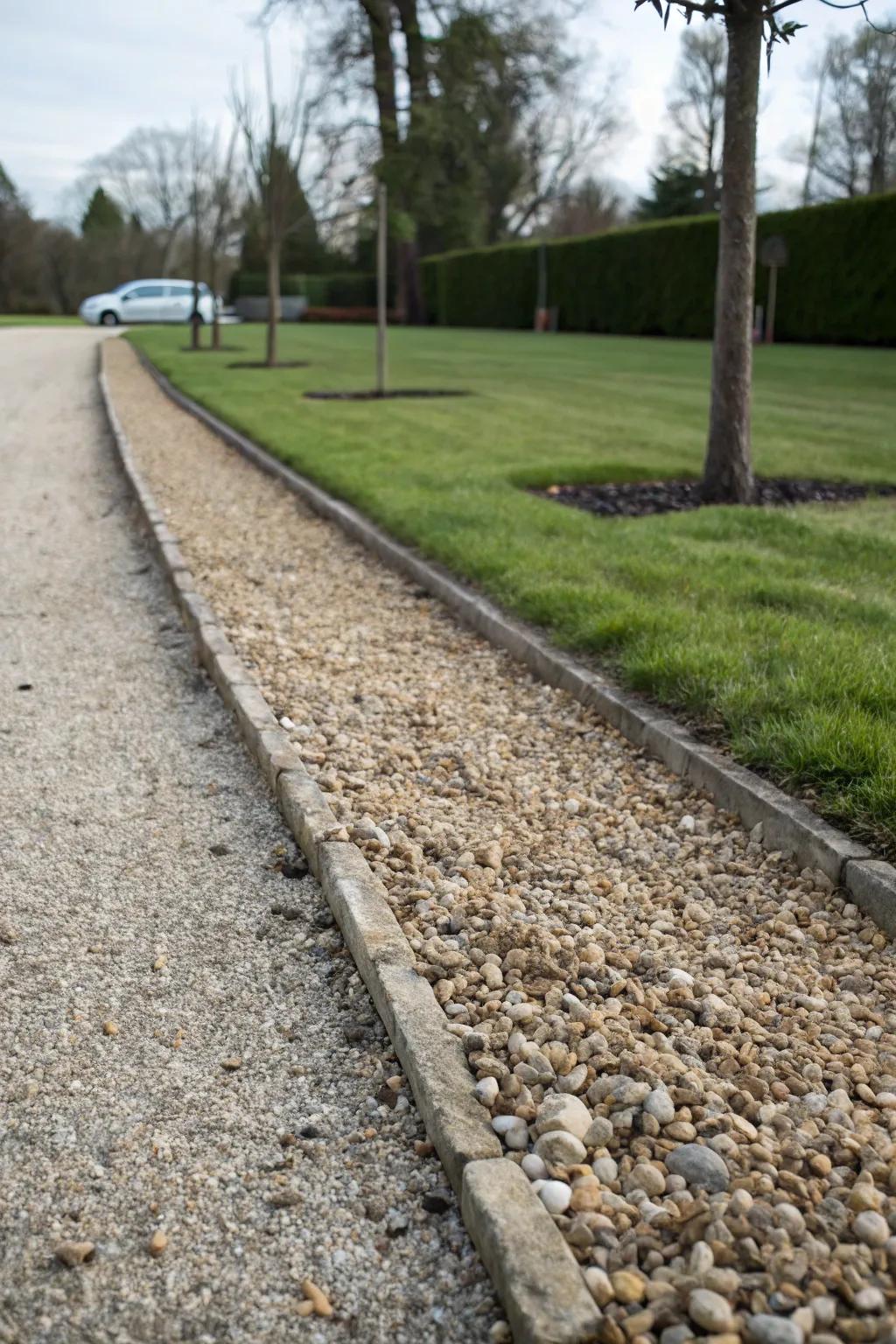
A simple gravel trench along the edges of your driveway acts as a natural water collector. I helped a neighbor with this, and it was a game-changer for their rainy season woes.
A few things you might like:
- Gravel Stabilization Grid: Enhance driveway stability and drainage with this easy-to-install gravel stabilization grid.
- Landscape Fabric: Prevent weed growth and improve water flow with durable landscape fabric under your gravel trench.
- Drainage Pipe: Ensure efficient water diversion with a flexible and durable drainage pipe system for your trench.
16. Use Layered Gravel
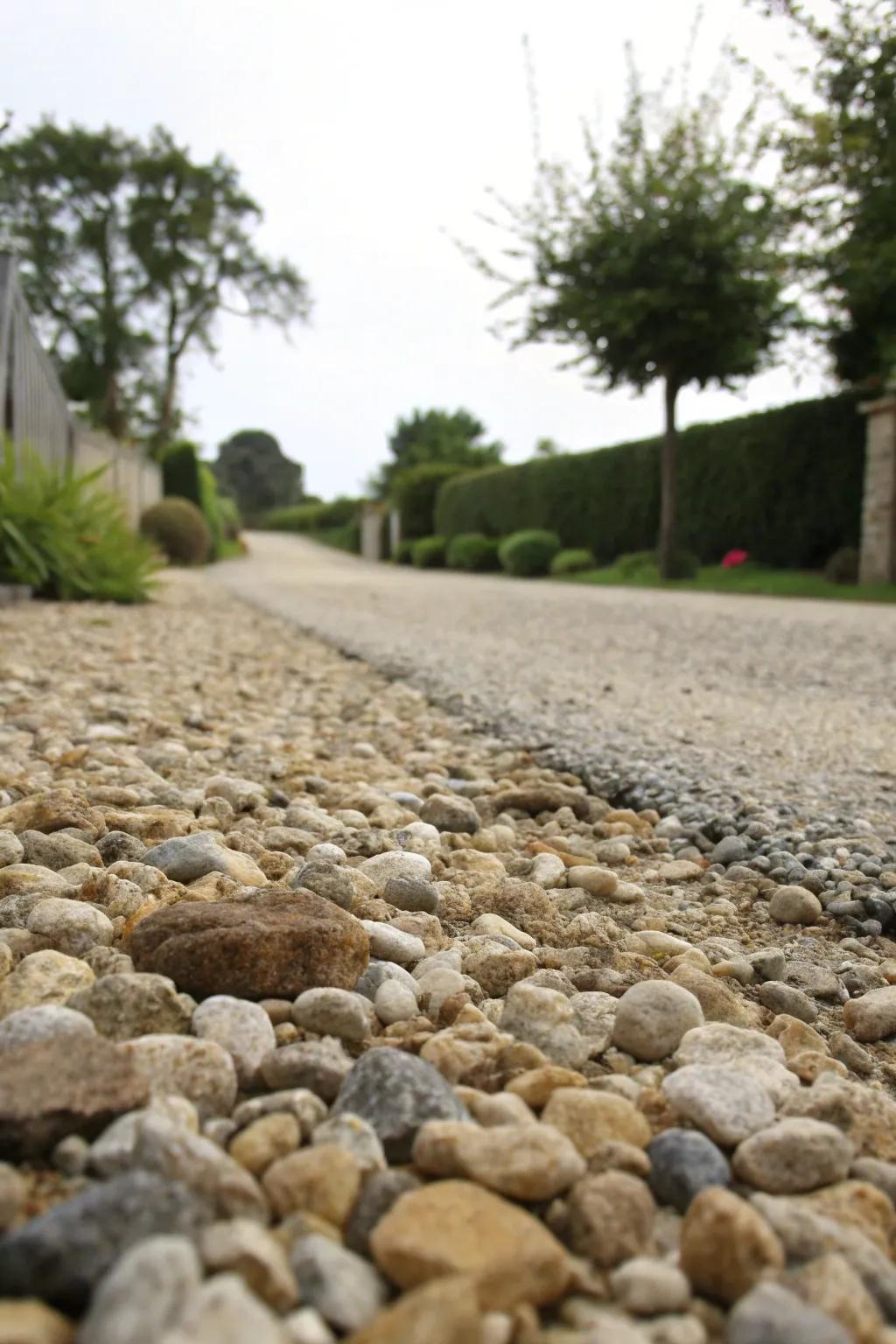
Layering different sizes of gravel can improve drainage and add texture. It’s a trick I’ve used to keep my driveway sturdy and stylish.
Explore these options:
- Drainage Gravel Mix: Enhance your driveway’s drainage with this gravel mix, designed for effective water runoff.
- Landscaping Pebbles: Add texture to your driveway with durable landscaping pebbles for a stylish finish.
- Geotextile Fabric Roll: Prevent erosion and improve stability by installing a geotextile fabric layer under your gravel.
17. Create a Water Garden

Transform a low spot into a water garden to naturally manage excess water. It’s a beautiful solution that brings nature closer to your doorstep.
Check if these fit your needs:
- Water Garden Pond Liners: Ensure a durable base for your water garden with high-quality, flexible pond liners.
- Aquatic Plants Kit: Add vibrant, eco-friendly aquatic plants to beautify and sustain your water garden ecosystem.
- Pond Water Pump: Maintain clean and circulating water in your garden pond with a reliable water pump.
18. Construct a Rain Garden
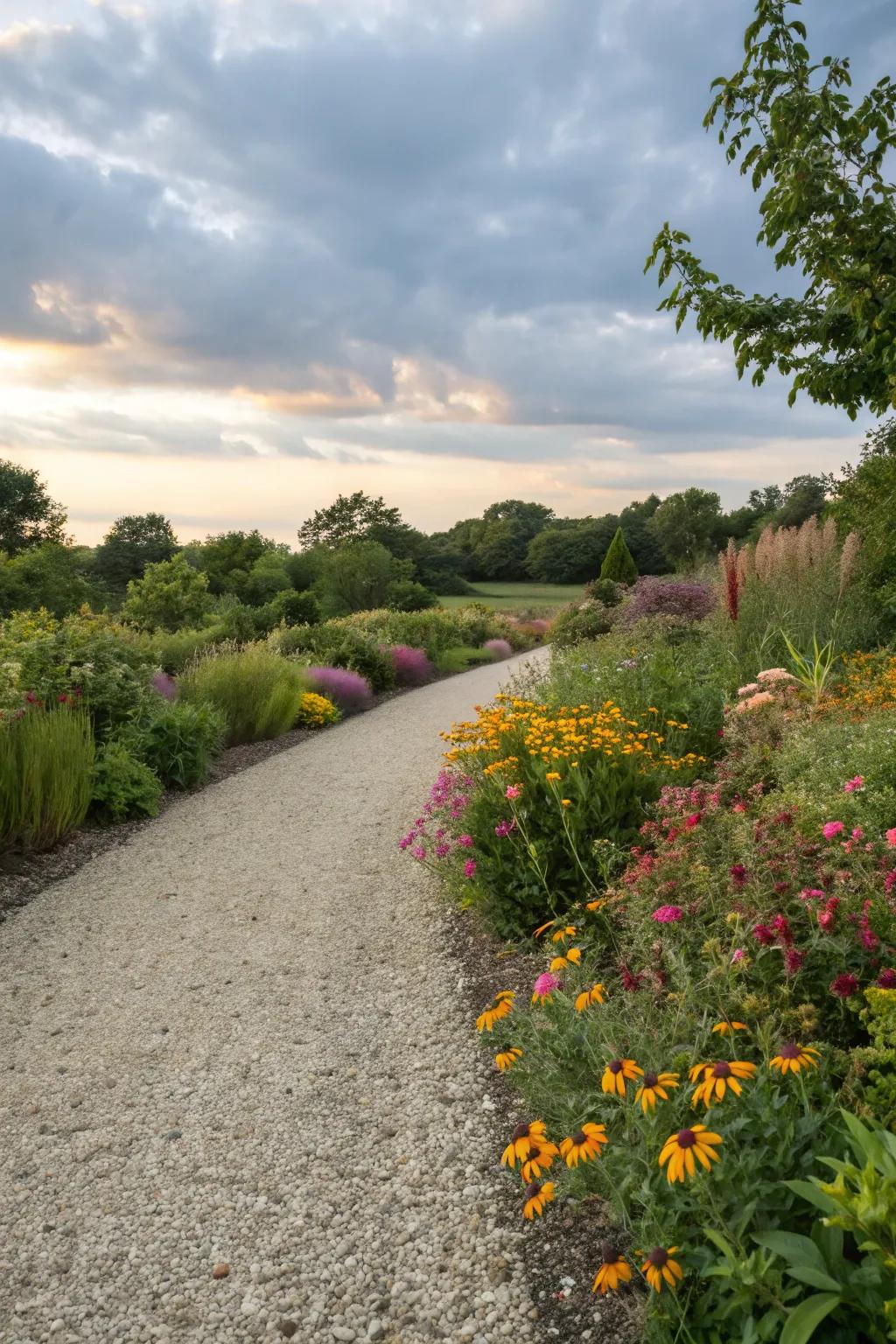
A rain garden near your driveway can absorb runoff and add a splash of color. I planted one with native flowers, and it’s now a vibrant focal point.
May just do the trick:
- Native Wildflower Seed Mix: Transform your garden with vibrant native wildflowers. Easy to plant and maintain, it’ll thrive beautifully.
- Rain Garden Soil Mix: Enhance drainage with specialized soil mix, ideal for rain gardens and promoting native plant growth.
- Garden Edge Barrier: Define your rain garden with durable garden barriers that prevent soil erosion and runoff.
19. Place a Grass Strip
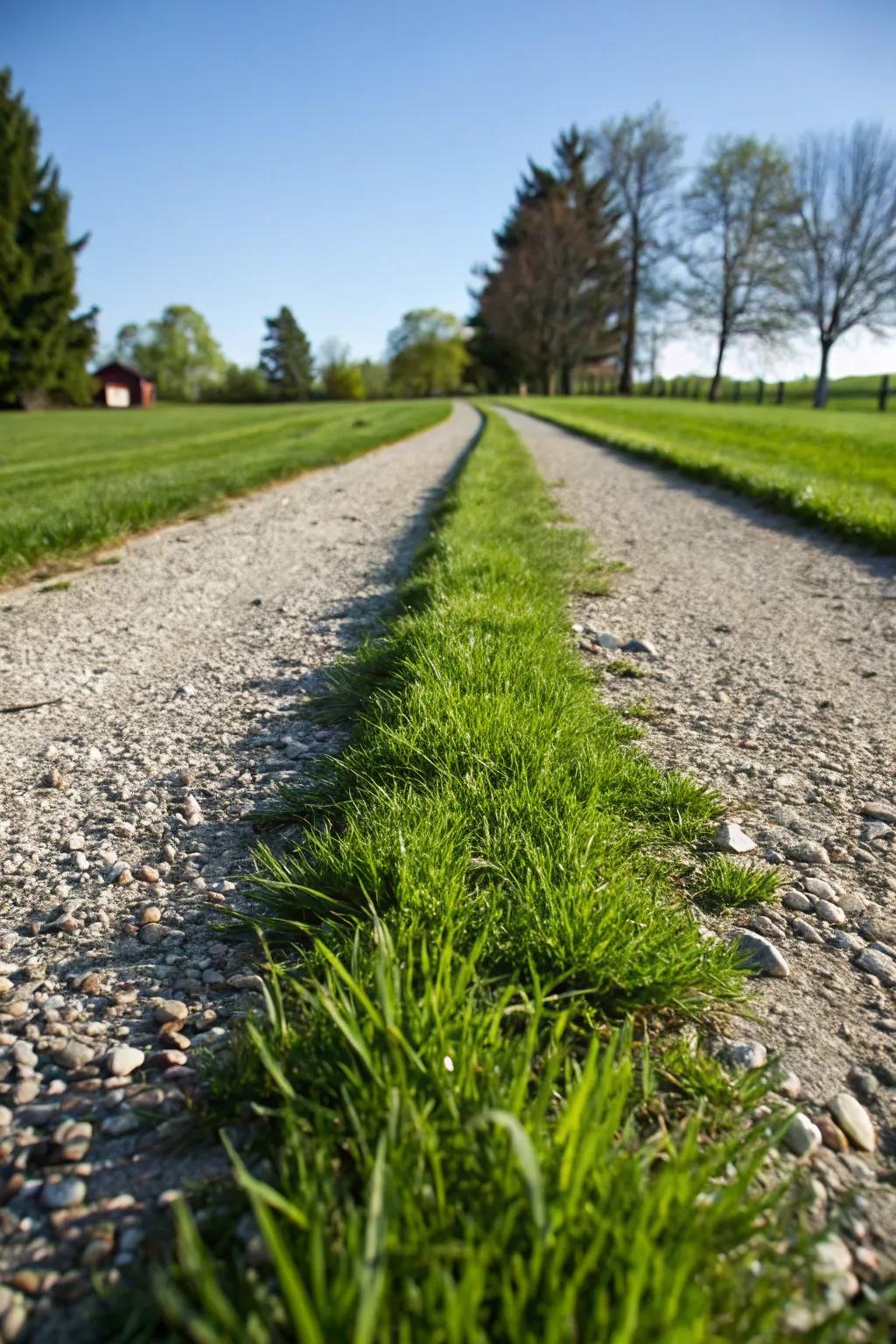
A grass strip down the center of your driveway can help with drainage and add a touch of green. It’s a great way to bring some life to an otherwise plain space.
A few choices to try:
- Grass Seed Mix: Achieve a lush, vibrant grass strip with high-quality seeds designed for durability and beauty.
- Lawn Edging: Keep your grass strip neat and tidy with easy-to-install lawn edging solutions.
- Garden Hose with Sprayer: Efficiently water your grass strip using a durable garden hose with adjustable sprayer.
20. Utilize Perforated Pipes
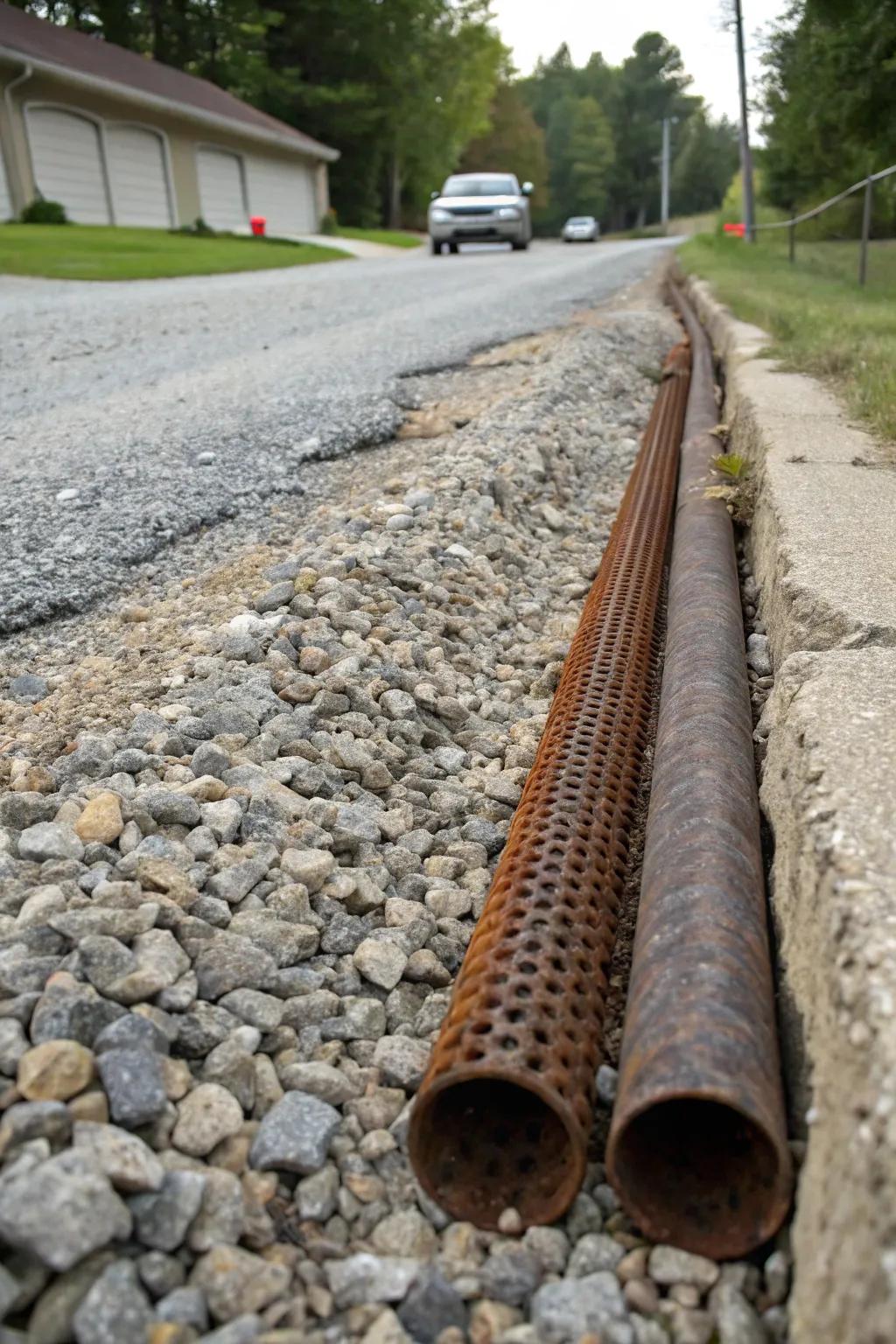
Lay perforated pipes to effectively guide water away from vulnerable spots. These were a perfect fit for my sloped driveway, keeping it dry and firm.
Products that could assist:
- Perforated Drainage Pipe: Install these pipes to efficiently divert excess water and maintain a drier driveway.
- Gravel for Drainage: Enhance drainage efficiency with gravel, assisting in diverting water away seamlessly.
- Drainage Fabric: Use this fabric to prevent clogs and improve the longevity of your drainage system.
21. Use Permeable Pavers
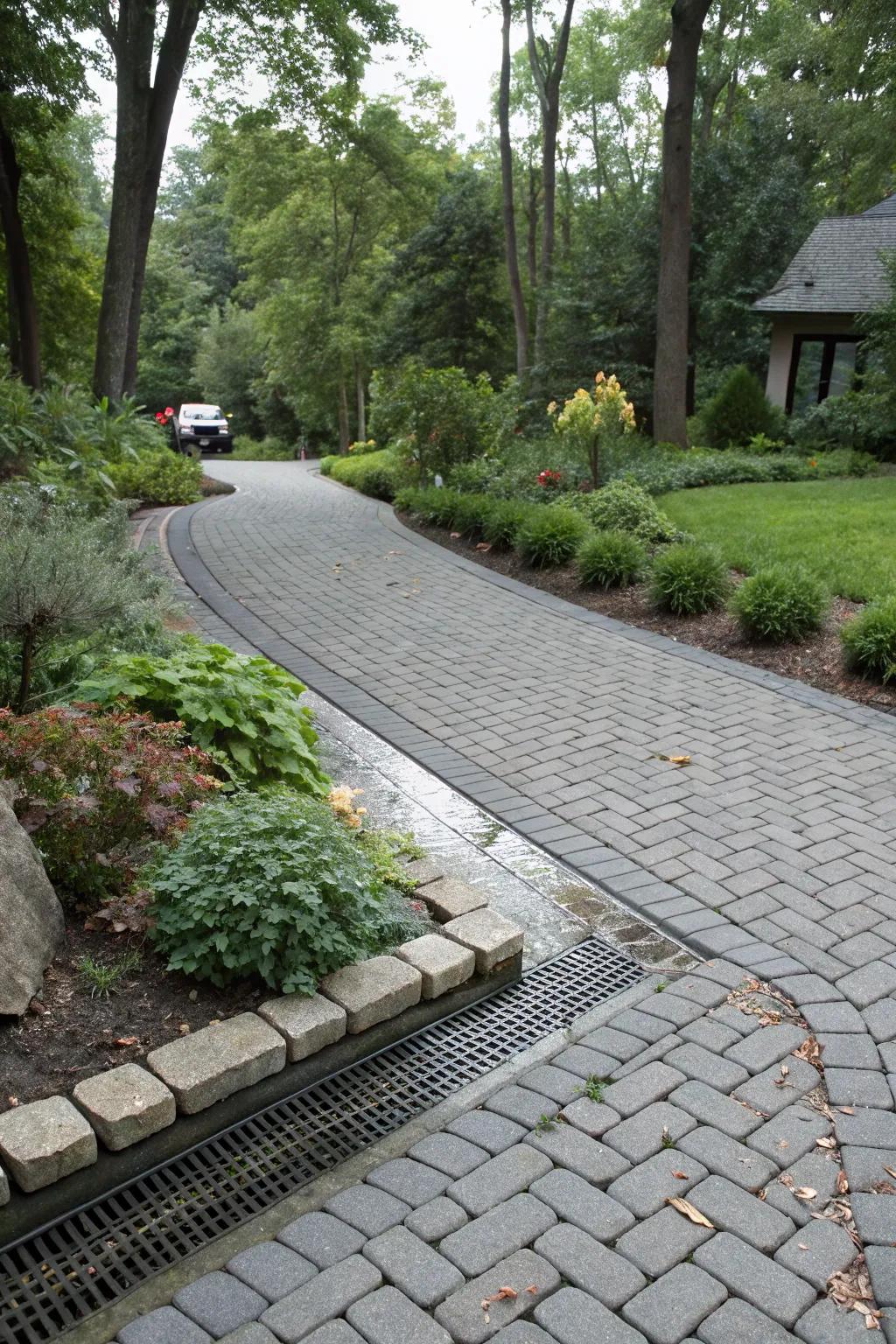
Switching to permeable pavers can make a world of difference by letting rainwater seep through the surface. I love how they blend into my garden’s natural aesthetics while being highly functional.
You might give these a try:
- Permeable Paver System: Transform your driveway by installing permeable pavers that enhance drainage and aesthetic appeal.
- Interlocking Gravel Grids: Ensure stability and drainage with interlocking grids designed to support gravel driveways efficiently.
- Water Permeable Driveway Tiles: Upgrade to permeable driveway tiles to effortlessly manage rainwater and complement garden aesthetics.
